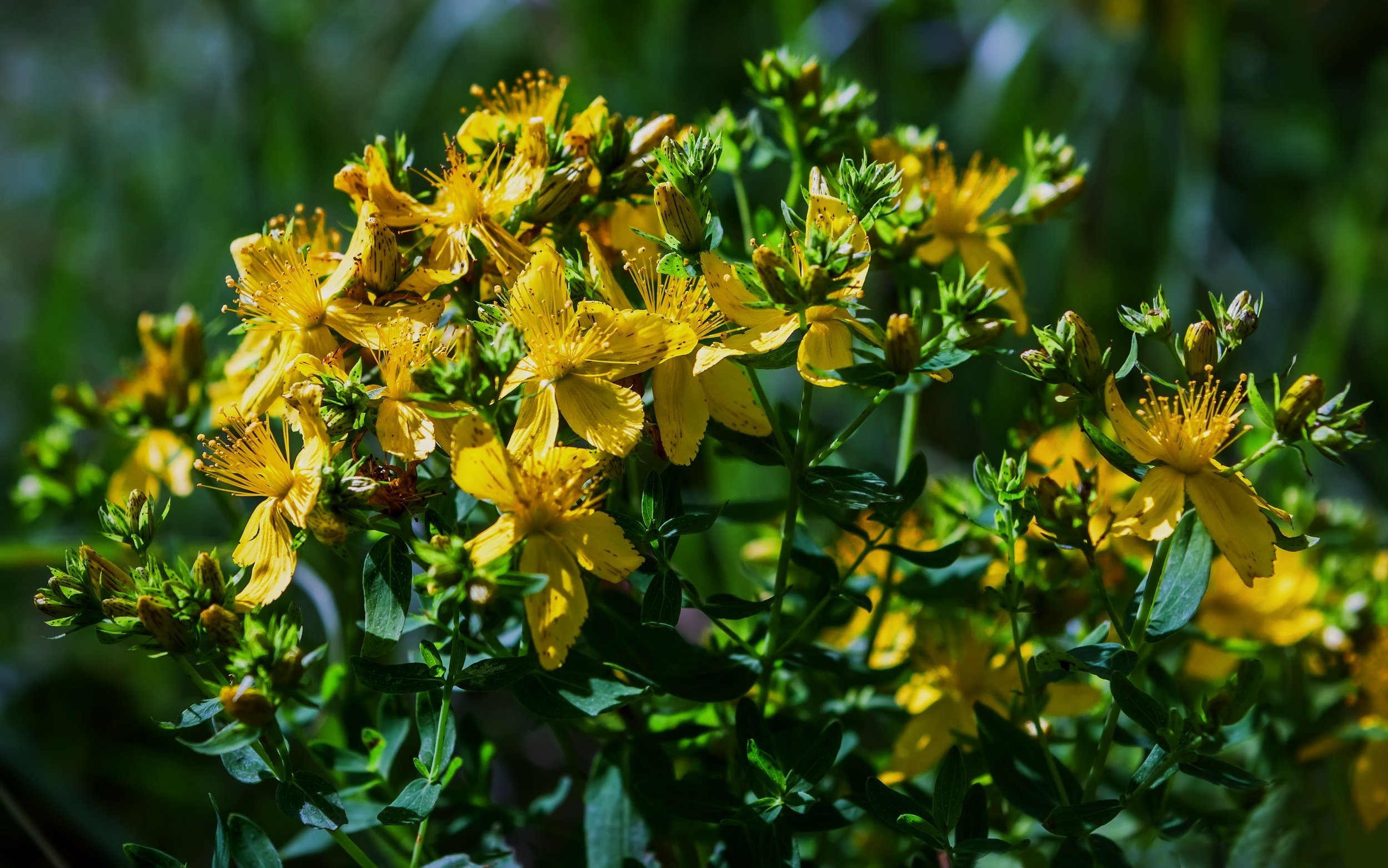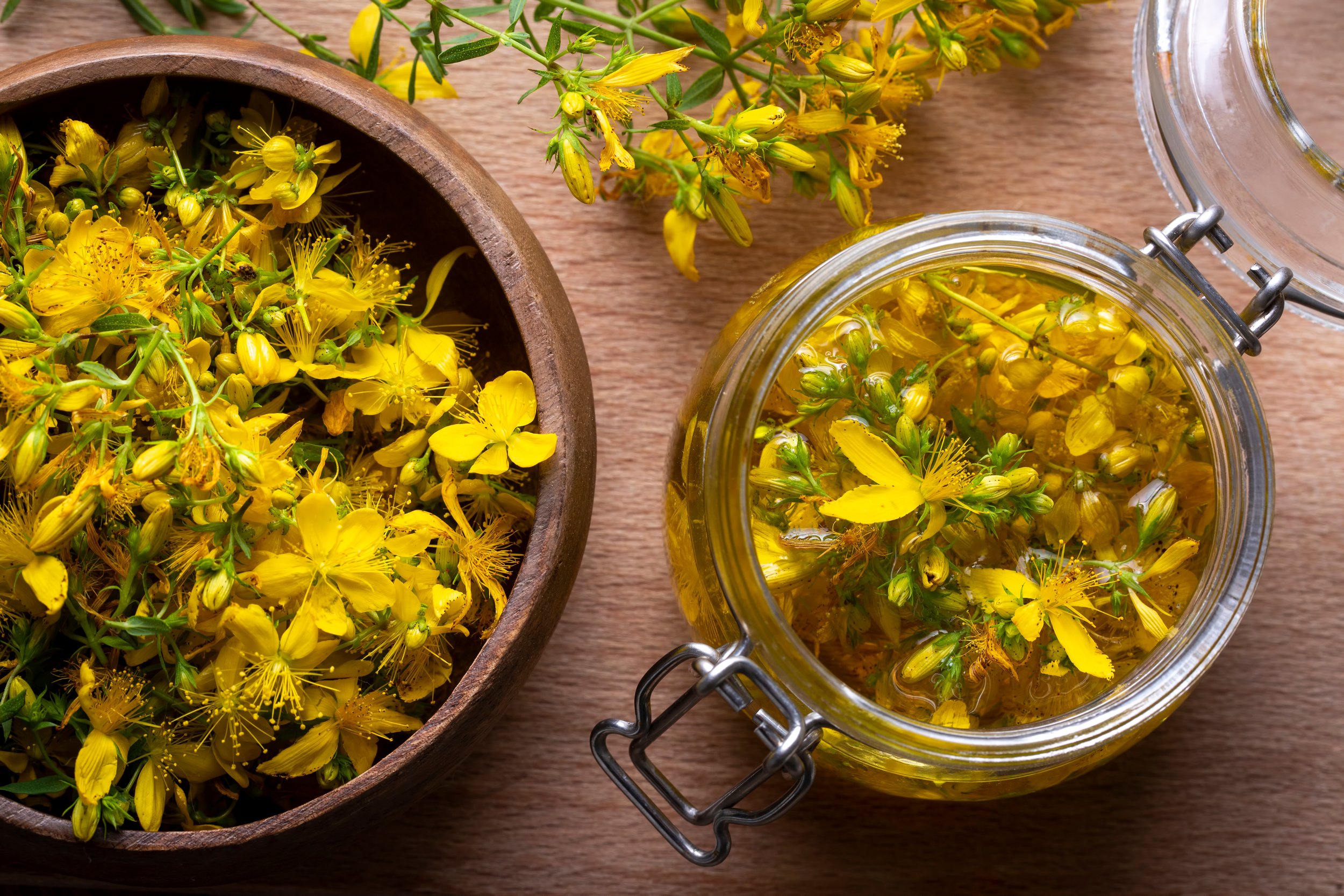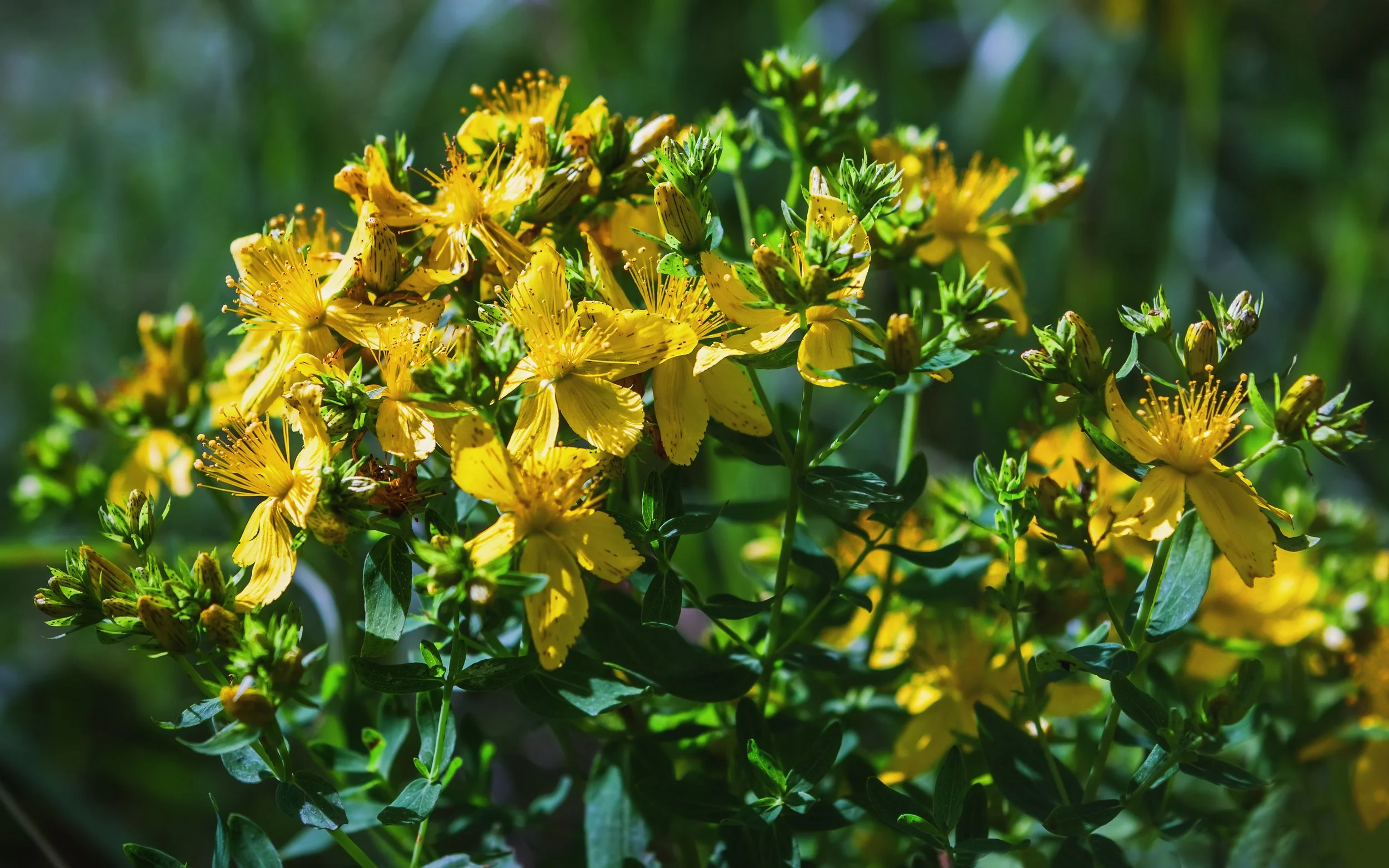
Saint Johns Wort
Hypericum perforatum
Therapeutics
Analgesic, antibacterial, antidepressant, anti-inflammatory, antioxidant, antiviral, astringent, restorative for the nervous system, speed wound healing.
Plant Anatomy & Growth
Saint John’s wort is a flowering perennial that stays fairly small, up to 100 cm high. It has a smooth stem with pale, oblong leaves that stack up the stem. At the top of each stem, orange-yellow flowers bloom with long stamens clustered in the center.
Native to Europe but now all over. Saint John’s wort thrives in meadows and banks of waterways. It prefers sunny areas and chalky soils.
Harvest all parts of these plants although the aerial parts and the most commonly utilized including the leaves, flowers, and stems. Make sure to harvest in midsummer, once the flowers bloom to gain their medicinal benefits too.
Color
Green to light brown
Scent
Mild and grassy
Taste
A bit bitter and grassy
Constituents
Hypericin, pseudohypericin, flavonoids, hyperforin (speeds wound healing), volatile oils
Uses
Use in an infusion, tincture, wash or topical.
Do not ingest if taking any medication as it can lessen the effect. May cause some sensitivity to light after ingestion.

References
Prisăcaru, A. I., Andriţoiu, C. V., Andriescu, C., Hăvârneanu, E. C., Popa, M., Motoc, A. G., & Sava, A. (2013). Evaluation of the wound-healing effect of a novel Hypericum perforatum ointment in skin injury. Romanian journal of morphology and embryology = Revue roumaine de morphologie et embryologie, 54(4), 1053–1059.
Canenguez Benitez, J. S., Hernandez, T. E., Sundararajan, R., Sarwar, S., Arriaga, A. J., Khan, A. T., Matayoshi, A., Quintanilla, H. A., Kochhar, H., Alam, M., Mago, A., Hans, A., & Benitez, G. A. (2022). Advantages and Disadvantages of Using St. John's Wort as a Treatment for Depression. Cureus, 14(9), e29468. https://doi.org/10.7759/cureus.29468
Nicolussi S, Drewe J, Butterweck V, Meyer zu Schwabedissen HE. Clinical relevance of St. John's wort drug interactions revisited. Br J Pharmacol. 2020; 177: 1212–1226. https://doi.org/10.1111/bph.14936

